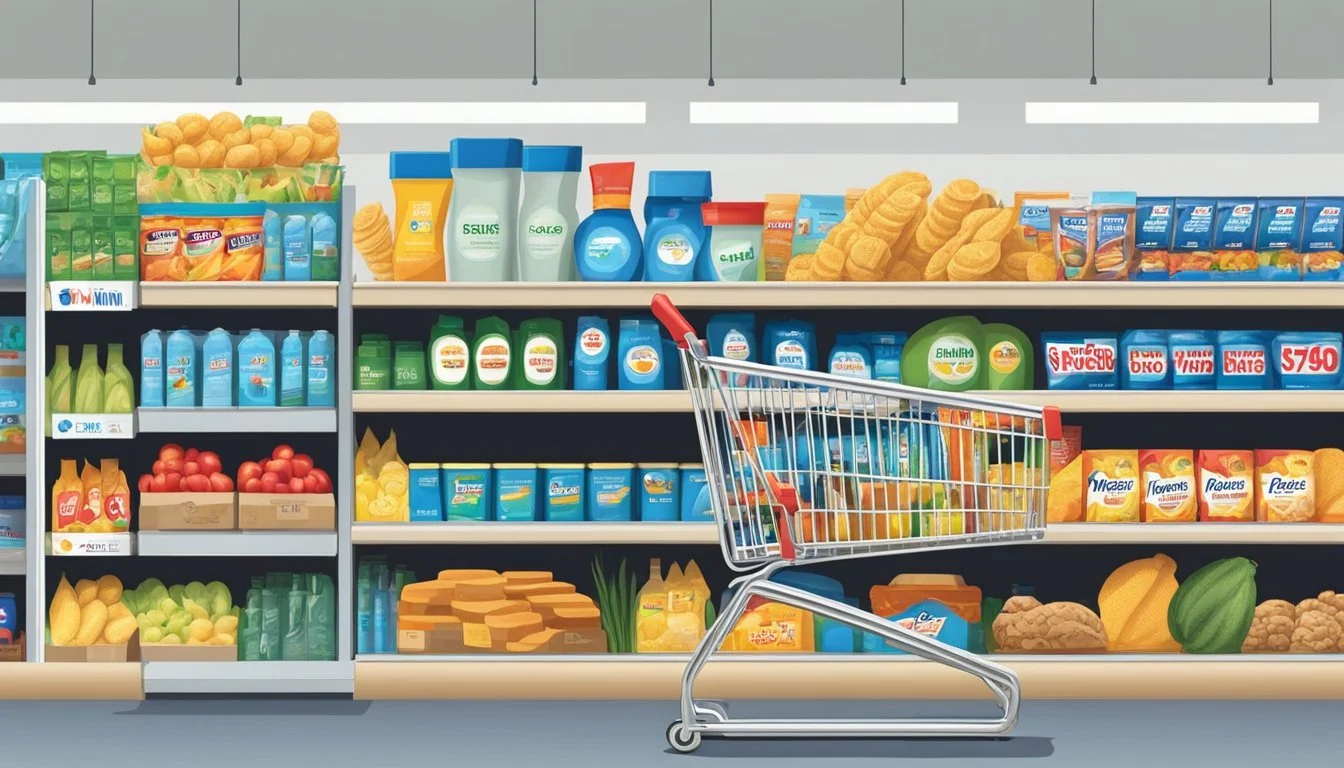Is Meijer Cheaper Than Winn-Dixie?
A Cost Comparison Guide
Part of Our Grocery Store Guide with Details on Meijer Prices and Winn-Dixie Prices
Navigating the realm of grocery stores can be a daunting task for shoppers looking to balance quality with cost. Meijer and Winn-Dixie are two prominent chains that Americans frequent for their grocery needs. Meijer, a supercenter chain with a wide array of products, is known for offering competitive prices on its store brands, catering to cost-conscious consumers who seek alternatives to national brands.
Winn-Dixie, predominantly located in the southern United States, is another key player in the grocery sector. Its SE Grocers line presents an economical choice, often being 20% cheaper than national brands and favored for staple items like sandwich bread and chicken. When considering the value offered by these stores, one must assess not just the pricing, but also the variety, quality of goods, and the shopping experience provided.
Overview of Meijer and Winn-Dixie
Meijer and Winn-Dixie are two prominent grocery chains in the United States, each with a distinct history and expansion trajectory. Their competitive pricing, variety of product offerings, and strategic use of store brands have positioned them as key players in their respective regions.
History and Expansion
Meijer began in 1934 in Greenville, Michigan, and is credited with pioneering the supercenter concept in the 1960s. It operates over 250 stores primarily in the Midwest.
Winn-Dixie, a subsidiary of Southeastern Grocers, has its roots in 1925 and is based in the southeastern United States. It has over 500 stores, serving customers in five states.
Store Locations and Demographics
Meijer's locations are concentrated in Michigan and the Midwest, catering to a demographic seeking variety and affordable prices in both urban and suburban areas.
Winn-Dixie primarily serves the southeastern U.S., offering competitive prices on grocery items to a demographic that values traditional southern staples alongside fresh produce and meats.
Range of Products Offered
Both Meijer and Winn-Dixie provide a wide range of products, from fresh produce, meat, and dairy to pantry staples and baked goods. They also offer non-grocery items, giving customers a one-stop shopping experience.
Meijer offers an extensive selection of fresh produce and healthy options.
Winn-Dixie emphasizes fresh meats and cheeses, and is reputed for its quality bread and store-brand products.
Store Brand Strategies
Store brands are a significant part of both chains' strategies:
Meijer utilizes its store brands as a cost-effective alternative to national brands, often aligning with consumer trends towards healthier and more affordable options.
Winn-Dixie uses its SE Grocers private label to offer lower prices, with some items being up to 20% cheaper. This brand is known for matching the taste and quality of national brands.
Each chain leverages its store brands to enhance value for customers. With Meijer tending towards a broad appeal across many categories and Winn-Dixie focusing on its southeastern specialties through the SE Grocers line, both are crafted to meet the needs of their specific customer base.
Price Comparison and Value Propositions
When comparing the prices and value propositions between Meijer and Winn-Dixie, consumers primarily look at the cost of everyday items, the availability of discounts and promotions, and the benefits of rewards and savings programs.
Typical Pricing for Common Items
Meijer and Winn-Dixie compete closely on the prices of common grocery items. For instance, Winn-Dixie offers its SE Grocers line, where items like sandwich bread may be found approximately 20% cheaper than comparable national brands. Meijer counters with competitively priced store brands, ensuring customers have access to affordable essentials such as milk, butter, eggs, lettuce, and tomato.
Discounts and Promotions
Both grocery chains actively use sales and promotions to help shoppers save money on their grocery bills. Winn-Dixie frequently runs deals that target savings on bulk purchases or BOGO (buy one, get one) deals on select products. Meijer, on the other hand, advertises weekly promotions and specials, which often include discounted prices on fresh produce and pantry staples.
Rewards and Savings Programs
Meijer's loyalty program, mPerks, offers digital coupons and personalized rewards, enhancing the savings potential beyond sale prices. Customers earn points for each dollar spent, which can be redeemed for discounts on future purchases. Winn-Dixie answers with its SE Grocers rewards, which not only allows customers to earn points but also fuels discounts, offering additional value as shoppers manage their grocery expenses.
Quality and Convenience Evaluation
In comparing Meijer and Winn-Dixie, customers often prioritize the freshness and quality of goods alongside the shopping convenience offered by these stores.
Freshness and Quality of Goods
Meijer and Winn-Dixie both focus on providing a quality selection of fresh produce and various food items. Meijer is respected for its wide assortment, often including organic and locally-sourced produce. Winn-Dixie responds to quality demands with its SE Grocers brand, known for a good balance between cost and quality, particularly for staple items like sandwich bread and chicken.
Statistics and reports typically highlight the following aspects about each store:
Meijer:
Diverse selection, including organic options.
Competitive pricing on store brands.
Winn-Dixie:
SE Grocers line appreciated for taste and value.
Approximately 20% cheaper on store-brand items compared to national brands.
Shopping Experience and Store Layout
When it comes to convenience, both stores present unique strengths in their shopping experience and store layout. Meijer stores provide an appealing layout that facilitates an efficient shopping journey, catering well to individuals with a specific shopping list. The dairy section is user-friendly and the overall store layout is designed to maximize convenience.
Alternatively, Winn-Dixie is known to focus on the southern market with a store layout that is straightforward, allowing customers to easily find everyday essentials. Anecdotal reports suggest:
Meijer:
Store layout caters to an efficient shopping experience.
Layout helps customers easily navigate to items on their shopping list.
Winn-Dixie:
Concentrates on core essentials, appealing to customers who prioritize convenience.
Streamlined layout in the southern market stores.
Both Meijer and Winn-Dixie take into account the ease of locating items, checkout speed, and the overall ambience to enhance customer satisfaction while shopping.
Comparative Analysis with Other Retailers
When comparing Meijer and Winn-Dixie to other retailers, it's important to consider the vast spectrum of grocery chains, from major multipurpose stores to discount and dollar stores. Their competitive pricing, product selection, and market positioning often determine their appeal to consumers.
Major Competitors
Meijer competes directly with large grocery chains like Walmart, Kroger, and Target. Walmart stands out for providing the best overall value, with lower prices for a standard basket of items. Kroger, similar to Meijer, is known for its wide-ranging product offerings but positions itself as slightly higher-end. Target's diverse operations encompass a vast array of products, though it may not match Meijer's product variety.
Niche Markets and Specialized Grocery Chains
Niche markets are dominated by specialized grocery chains such as Trader Joe's, Sprouts Farmers Market, and Whole Foods. Trader Joe's chooses to opt out of large-scale price comparisons due to its unique product selection. Sprouts Farmers Market and Whole Foods market themselves to health-conscious consumers, offering organic and gourmet products, which typically come at a premium compared to Meijer or Winn-Dixie's pricing structure.
Comparison with Discount and Dollar Stores
Discount stores like Aldi present a significant price challenge, with their store brand items often undercutting Meijer and Winn-Dixie prices. Dollar General and Family Dollar lead the budget retail market, emphasizing cost over variety. These stores operate with a leaner selection, focusing intensively on reducing operational costs to offer lower prices, sometimes at the expense of variety or quality found in traditional grocery chains like Meijer and Winn-Dixie.
Consumer Strategies for Shopping
In the quest for savings, consumers at grocery shops like Meijer and Winn-Dixie often aim for strategic shopping. Utilizing deals, understanding promotions, and being smart with shopping lists and rewards can lead to significant savings.
How to Spot the Best Deals
Savvy shoppers know that the best deals are often hidden in plain sight. They compare prices, not just between different brands but also across various stores. Price comparison might reveal that Winn-Dixie's SE Grocers line is up to 20% cheaper than national brands, especially on staples like sandwich bread and chicken. At Meijer, store brands often compete closely with national brand prices. Consumers should also consider proximity; the cost of travel can negate savings made from shopping at a farther store with lower prices.
Understanding Grocery Chain Promotions
Grocery chains frequently run promotions that can offer substantial savings. Knowledgeable consumers keep an eye out for sales in weekly ads and in-store signage. Digital coupons available through a store's website or app can also contribute to price reductions. A loyalty program is another avenue for deals—both Meijer and Winn-Dixie offer rewards for regular purchases. Consumers should become familiar with the terms of these promotions to fully benefit from them.
Maximizing The Use of Shopping Lists and Rewards
A disciplined approach to shopping involves the use of a shopping list to prevent impulse buys that can inflate the grocery bill. Regular use of a store’s rewards and loyalty program can lead to long-term savings. For example, accumulating points at Winn-Dixie can result in discounts on future purchases. At Meijer, shoppers might combine manufacturer coupons with store promotions to maximize value. Tracking these benefits and planning purchases around them can make a noticeable difference in a shopper’s budget.
Final Thoughts and Recommendations
When choosing between Meijer and Winn-Dixie, consumers should consider their shopping priorities and geographical location. Meijer, with a broader range of products, caters to shoppers seeking a one-stop shopping experience for both groceries and general merchandise. It’s a strong contender for those who value variety and convenience within the Midwest where it primarily operates.
Winn-Dixie, on the other hand, is a grocery chain with a presence mainly in the southern United States. It may offer better savings on grocery items, and its store brand, SE Grocers, competes with national brands on both taste and quality, often at a 20% lower cost.
Shoppers who prioritize their grocery budget are likely to find Winn-Dixie more cost-effective, especially for staple items. For those who have access to both chains, the ideal strategy might involve using Winn-Dixie for basic groceries and Meijer for more diverse shopping needs.
It's also worth exploring loyalty programs, weekly sales, and store-specific apps that both chains may offer, as these can lead to additional savings and benefits based on individual shopping habits. Remember, convenience and quality also play a role in the value a store provides, so factor these into your decision alongside pricing.
In conclusion, both Meijer and Winn-Dixie can be good choices under different circumstances. Shoppers should decide based on what matters most to them—be it cost, variety, or shopping experience.







